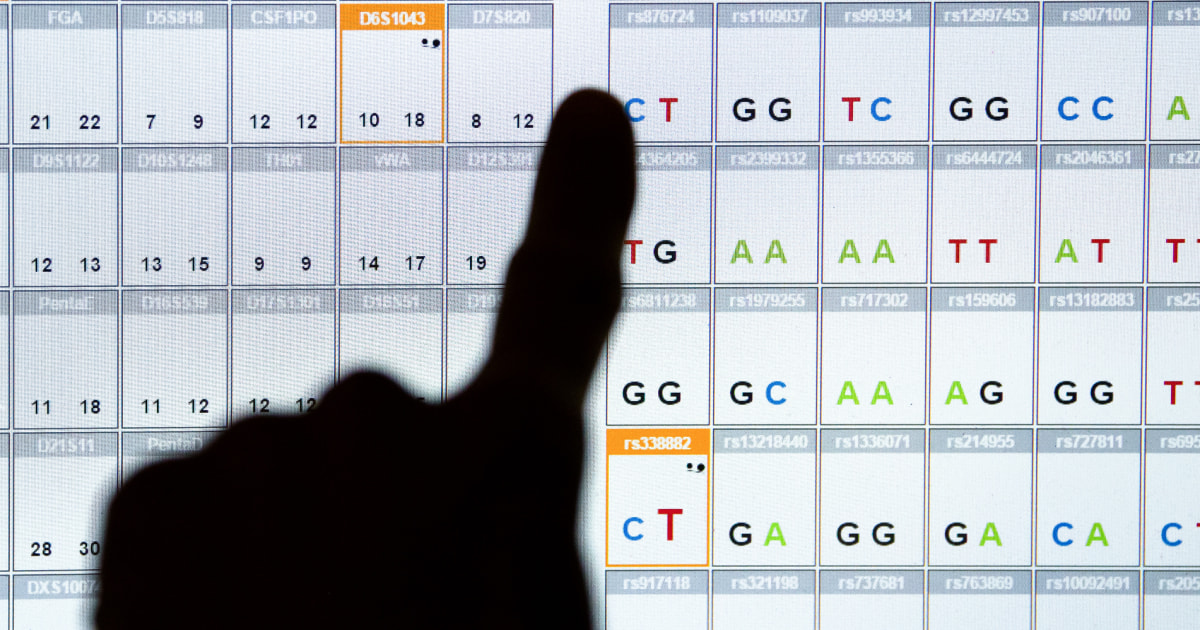
A newly identified neurodevelopmental disorder may explain tens of thousands of cases of intellectual disability whose cause was previously unknown, according to a new study.
The research, published Friday in the journal Nature Medicine, investigates the effects of mutations in the gene RNU4-2, which is found in all animals, plants and fungi.
The gene plays an important role in gene splicing — the process of cutting out portions of genetic material and stitching others together. Ernest Turro, the new study’s senior author and an associate professor of genetics and genomic science at the Icahn School of Medicine at Mount Sinai, said that in theory, mutations in the RNU4-2 gene could disrupt that splicing process, ultimately leading to abnormal brain development and intellectual disability.
This type of disability is characterized by significant limitations to a person’s ability to learn, reason, problem-solve, communicate or socialize, and it is often indicated by a low IQ. People with the disorder might also have seizures, motor delays, small heads, short stature or low muscle mass, according to the research.
The researchers hope that genetic tests for intellectual disabilities in children can quickly be updated to screen for the mutations.
“A considerable number of families will finally be able to have a genetic diagnosis,” Turro said.
Dr. Hakon Hakonarson, director of the Center for Applied Genomics at Children’s Hospital of Philadelphia, who was not involved in the study, said that because most cases of intellectual disability don’t have a known cause, the findings could “explain a good number of cases that are currently unexplained.”
The study estimates that up to 1 in 20,000 young people might have the condition. Researchers don’t know about the life expectancy associated with the disorder, so they have not estimated its prevalence among older adults, but Turro said some people with the genetic mutation have lived into adulthood.
The estimate suggests that the condition is slightly less common than Rett syndrome, a genetic disorder that causes babies to rapidly lose coordination, speech and mobility and affects about 1 in 10,000 female infants.
But Dr. Jeffrey Gruen, a professor of pediatrics and genetics at Yale School of Medicine who was not part of the research, said mutations in the RNU4-2 gene may turn out to be less common than the study suggests. He also questioned whether everyone with the mutations would have obvious learning or developmental issues.
“There are probably tens of thousands of people around the world that carry this, but does it cause intellectual disability in those tens of thousands? I don’t know,” he said. Gruen added, however, that the discovery is significant.
Hakonarson said the mutations probably cause at least some symptoms.
“The likelihood that this is disease-causing with these variants — which are not seen, by the way, in healthy people — is almost 100%,” he said.
The findings are based on data from the National Genomic Research Library, which contains information about the genomes — the entirety of a person’s genetic code — of people in the U.K. The study looked at the genomes of more than 77,000 participants.
Historically, studies of neurodevelopmental disorders have only looked at a small portion of the genome — specifically, so-called coding genes that are involved in the production of proteins. Of the 1,427 genes linked to intellectual disability, all but nine are coding genes.
Instead, Turro and his research team looked at noncoding genes — which don’t produce proteins — in about 5,500 people with intellectual disabilities. Mutations in the RNU4-2 gene were strongly associated with that group, compared with around 46,000 people who did not have intellectual disabilities.
“There’s no question this paper is going to provoke a lot of studies now,” Hakonarson said. “People are going to go hunting for additional genes, because there’s a lot of noncoding RNA genes.”
The mutations in the RNU4-2 gene seem to occur at random, so they most likely can’t be passed from parent to child. For that reason, getting a diagnosis could be a comfort to parents who want to have more children, Turro said.
The researchers said it will be quite some time before they figure out whether the disorder can be treated with drugs or gene therapy.
“These are an extremely tough group of disorders to tackle therapeutically,” Andrew Mumford, a co-author of the study and research director of the South West England NHS Genomic Medicine Service, said on a call with reporters.
But even without an available treatment, he added, families often benefit from having a diagnosis.
“It helps them come to terms with the impact,” he said. “Being able to tell someone, ‘Yes, we have found the cause of development disorder in your child’ is incredibly powerful.”
Gruen said the discovery could also help connect families whose children have the same genetic condition so they can share stories and offer support.
“You could get some idea of what the future holds for them,” Gruen said. “Is this something that could be remediated? Can we expect there to be language? Can we expect there to be motor issues? That’s also very, very important to know.”






